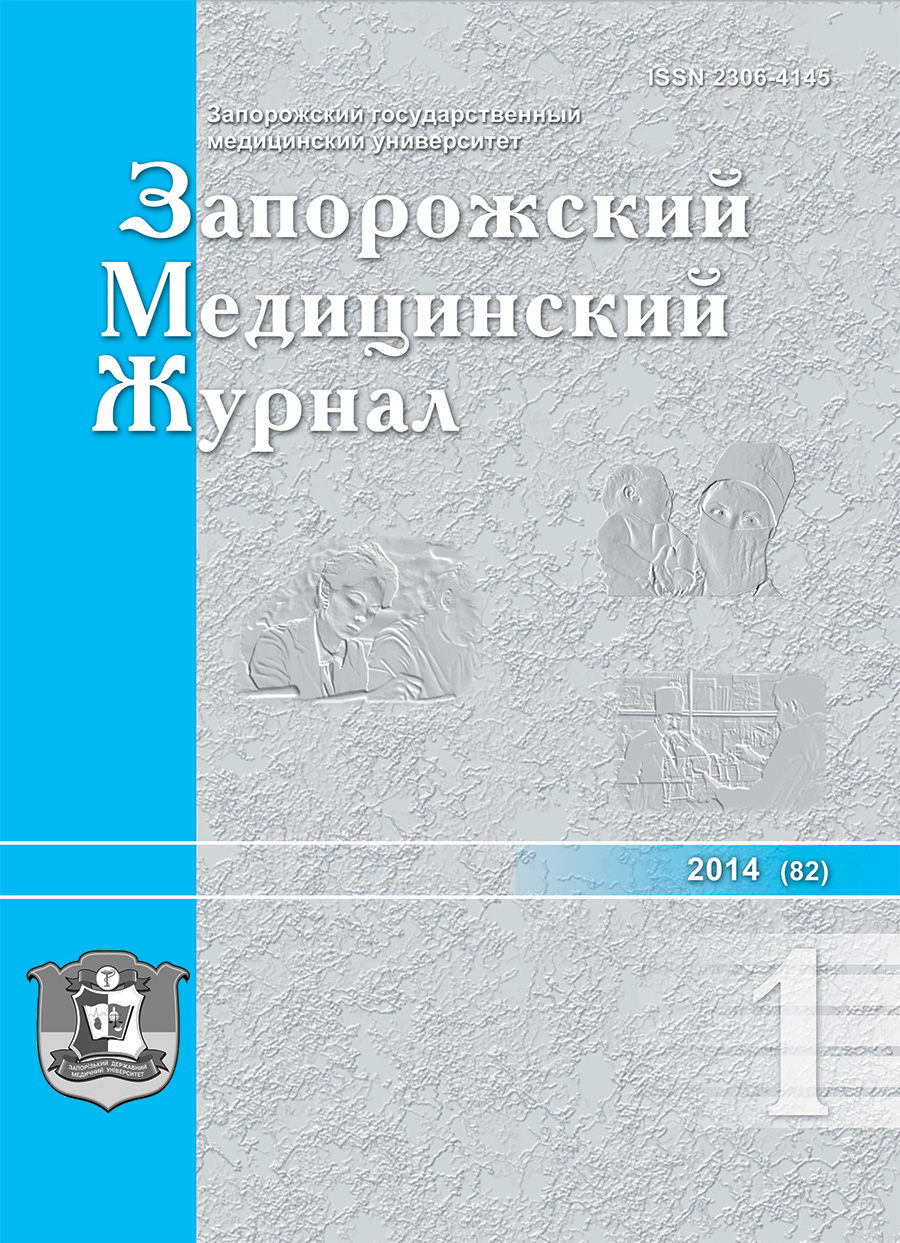EVALUATION OF PERIODONTAL TISSUES CONDITION IN CHILDREN WITH BLOOD COAGULABILITY PATHOLOGY
DOI:
https://doi.org/10.14739/2310-1210.2014.1.23646Keywords:
children with oncohematological pathology, hyperplastic processes, ulcero-necrotic changes, necrosis of the mucousAbstract
Background. Actuality of the problem is determined by the high prevalence of periodontal tissues inflammatory diseases in children with blood pathology (100%). Primary prevention of dental caries and periodontal diseases has the exceptional importance in the dentist’s work with children who have blood coagulability disorders. Prevention of dental diseases of the oral cavity in this category of patients has a number of features because there is risk of bleeding during both home oral hygiene and professional hygiene. Exogenous prevention (fluoride-containing gels, varnishes, solutions, sealants) also has its own peculiarities in these children. On the other hand, the impossibility of preventive measures implementation is the significant factor in the pathogenesis of gingivitis and subsequently periodontitis in children with disorders of blood coagulability.
Aim. To examine the status of oral hygiene in children with blood coagulability disorders. To examine the severity of inflammatory and destructive changes in the periodontal tissues in children with disorders of blood coagulability. To investigate timing and frequency of oral hygiene implementation in children with disorders of blood coagulability. To reveal the interrelations between the intensity, prevalence of periodontal tissues disorders in children with blood coagulability pathology and the periods of tooth development, taking into account the influence of risk factors and frequency of oral hygiene.
Materials and methods. 120 children between 2 and 18 years old with blood coagulability disorders (hemophilia A, B, thrombocytopenia, thrombocytopathy) were examined. Children were divided into following age groups: I – 2-5 years old (40 children), II – 6-10 years old (40 children), III – 11-18 years old (40 children), according to the periods of tooth development, with an equal number of children in groups according to diagnoses. Hygiene index value was determined according to Fedorov and Volodkina, PMA index (papillary-marginal-alveolar index) was determined by standard methods. Visual presence of inflammation clinical signs and periodontal tissue condition was determined in each group. During interviews with parents the timing and frequency of oral hygiene were studied on the proposed scheme.
Results. During clinical examination of children with pathology of blood coagulability unsatisfactory level of oral hygiene was revealed. When evaluating PMA index in different age groups it should be noted that mild gingivitis is observed in all groups (5%). The most numerous group was one with gingivitis of moderate severity (71%) and severe course (24%). Diffuse catarrhal gingivitis dominates in the structure of inflammatory diseases of gums, gingival papillae and gingival margin. Analysis of the data of PMA index and visual examination shows that diffuse inflammation prevails in 99% of cases. It was found out that everyday teeth cleaning was carried out by 25% of children in group I and 40% of children in group III. Obviously, the obtained data indicate the untypical inflammatory process and the high prevalence of gingival and periodontal inflammation in the examined children.
Conclusions. It was found out that low indicators of the oral hygiene level are registered in all groups of examined children; oral hygiene in these children was not carried out because of the risk and fear of bleeding. Prevalence of inflammatory diseases of periodontal tissues in examined children was 100%. Treatment of gingivitis or visit to the dentist due to gingival bleeding were not carried out. Search and use of adequate oral hygiene products for children with pathology of blood coagulability, development of hygiene programs and supporting activities taking into account the underlying disease were put on the agenda by this fact.
References
Хоменко Л.О. Стоматологічне здоров’я дітей України, реальність, перспективи / Л.О. Хоменко // Науковий вісник НМУ. – 2007. – № 4. – С. 47–51.
Каськова Л.Ф. Профілактика стоматологічних захворювань / Л.Ф. Каськова, Л.І. Амосова, О.О. Карпенко. – Х.: Факт, 2011. – 392 с.
Стоматология детей и подростков / [пер. с англ. под. ред. Р.Е. Мак-Дональда, Д.Р. Эйвери]. – М.: Медицинское информационное агентство, 2003. – 766 с.
Попруженко Т.В. Профилактика основных стоматологических заболеваний / Т.В. Попруженко, Т.Н. Терехова. – М.: МЕДпресс-информ, 2009. – 464 с.
Розробка та ефективність нових методів профілактики та лікування запальних захворювань пародонта / Н.О. Бас, О.М. Давиденко, В.А. Чумаченко [та ін.] // Вісник стоматології. – 2008. – № 1. – С. 22–23.
Современные средства экзогенной профилактики заболеваний полости рта / [Л.А. Хоменко, Н.В. Биденко, Е.И. Остапко, В.И. Шматко]. – К.: Книга плюс, 2001. – 208 с.
Улитовский С.Б. Практическая гигиена полости рта / С.Б. Улитовский // Новое в стоматологии. – СПб., 2002. – 328 с.
Федоров Ю.А. Профилактика заболеваний зубов и полости рта / Ю.А. Федоров. – Л.: Медицина, 1979. – 144 с.
Хоменко Л.А. Клинико-рентгенологическая диагностика заболеваний зубов и пародонта у детей и подростков / Л.А. Хоменко, Е.И. Остапко, Н.В. Биденко. – М.: Книга плюс, 2004. – 200 с.
Энциклопедия профилактической стоматологии / [под ред. С.Б. Улитовского]. – СПб.: Человек, 2004. – 184 с.
Downloads
How to Cite
Issue
Section
License
Authors who publish with this journal agree to the following terms:
Authors retain copyright and grant the journal right of first publication with the work simultaneously licensed under a Creative Commons Attribution License that allows others to share the work with an acknowledgement of the work's authorship and initial publication in this journal. 

